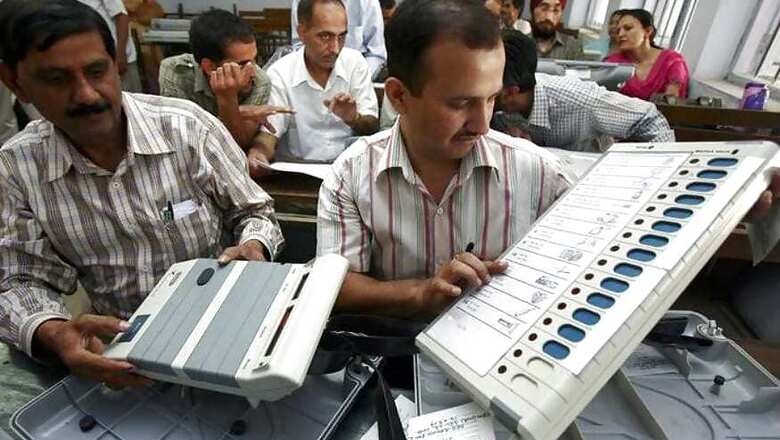
views
New Delhi: With over 90 crore eligible voters, seven phases of elections, spread across 29 states and 7 Union Territories, the 2019 Lok Sabha elections were one of the biggest in the world. Apart from the mammoth task of ensuring a smooth voting process, the Election Commission will also have to make sure that the counting of the votes is done accurately.
The counting of votes for Lok Sabha election would be done on May 23. Here is a step by step description of the whole process:
• A Parliamentary Constituency (PC) has, on an average, 6 to 7 Assembly Constituencies (AC). For instance, Telangana has 119 Assembly seats and 17 PC.
• AC is the fundamental unit for conducting elections and counting. The responsibility for conduct and counting of each AC is on Assistant Returning Officer (ARO). For example, I am currently the ARO of Bhadrachalam AC.
• The counting starts at 8am. Before starting of counting the strong room (where EVMs are stored) is opened in presence of Political Parties.
• It is done in a large hall where there are generally 14 tables for counting. All candidates are allowed to appoint Counting Agents for each table. Moreover, the counting staff is assigned randomly. To ensure fairness and transparency, a Counting Micro Observer is also appointed (generally officials from bank /LIC).
• Let's say that an AC has 280 Polling Stations then the number of rounds required for counting would be: 280 / 14 = 20. In first round counting for PS Number 1 to 20 would be done.
• Counting of votes is done through EVMs. The votes polled are stored in a machine called Control Unit. A control unit has a ‘Result’ button. On pressing this button, we get the number of votes polled in favour of every candidate sequentially.
How Result is Displayed
The result is displayed usually like this:
• Candidate - 1
• Votes – xyz
The time taken for display hardly takes 2 to 3 minutes. However, there is a lot of paperwork and points that need to be checked before finalising the result of a particular round.
Sample checklist
A sample checklist would look like:
• Whether the Machine Number of CU tallies with the number given to Political Party before polling.
• Whether all the seals on the machines are intact or not.
• Whether the total number of votes in the machine is equal to the number of votes written on Form 17C (a form given to Political Parties after the polling by the Presiding Officer containing important details like number of votes, seals, etc.)
The signature of counting agent is taken on the result sheet after every round. There is a Counting Observer appointed by ECI, who randomly verifies the result of 1–2 Polling Station per round.
Counting Done Under Supervision
As per Indian laws, the counting of votes is done under the supervision and direction of the Returning Officer of the Constituency, in the presence of candidates and their agents. Counting may be done in more than one place and also at more than one table in the same place. Each candidate appoints a counting agent from his/her party to take care of the interests of the party by observing and keeping a watch. There are two systems of counting votes:
Generally, two to three rounds are done in 1 hour. So it would take around 6–7 hours to complete the counting of one AC.
After the completion of counting, one PS is selected randomly (as per recent Supreme Court judgment counting is now to be done for 5 Polling Stations) by the political parties and the counting of VVPAT slips are done for that PS. Counting of VVPAT slips is a time consuming process and easily take 1 hour per PS.
Are VVPAT Slips Counted?
The counting of VVPAT slips is also done in cases where:
CU encounters some error and result cannot be retrieved from CU.
There is a difference in the vote shown in CU and the vote mentioned in Form 17C. This situation arises when the Presiding Officer forgets to clear the mock poll votes from the machine.
Other Steps
• There are few other steps in counting viz. Counting of Postal Ballot, Service Voters.
• The best part about counting is the mind-boggling number of checks and procedures prescribed by ECI that need to be followed.
• Therefore, getting results takes only 10% time, the rest of the 90% gets devoted to making counting process free from bias, leaving not even an iota of doubt regarding the electoral process.
(With inputs from Bhavesh Mishra, 2015 IAS topper and current Assistant Returning Officer of Bhadrachalam AC)
















Comments
0 comment